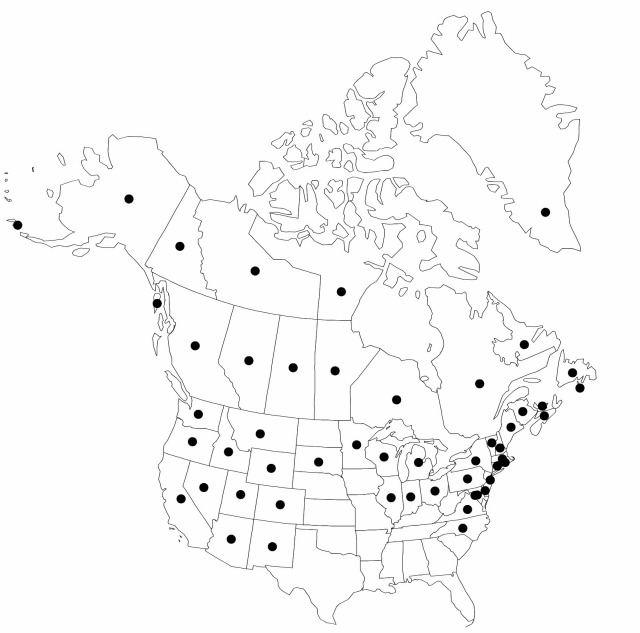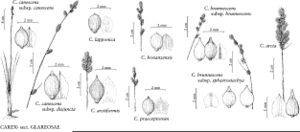Carex canescens subsp. canescens
Culms 15–60 cm. Inflorescences 3–5 (–7) cm, all but proximal spikes approximate or slightly remote. 2n = 56.
Phenology: Fruiting Jun–Aug.
Habitat: Wet, usually base-poor habitats, such as sphagnum bogs, moist coniferous forests and meadows, from lowlands to near the timberline in mountains
Elevation: 0–3500 m
Distribution

Greenland, St. Pierre and Miquelon, Alta., B.C., Man., N.B., Nfld. and Labr., N.W.T., N.S., Ont., P.E.I., Que., Sask., Yukon, Alaska, Ariz., Calif., Colo., Conn., Del., D.C., Idaho, Ill., Ind., Maine, Md., Mass., Mich., Minn., Mont., Nev., N.H., N.J., N.Mex., N.Y., N.C., Ohio, Oreg., Pa., R.I., S.Dak., Utah, Vt., Va., Wash., Wis., Wyo., South America, Eurasia, Australia
Discussion
Carex canescens subsp. canescens is a variable taxon with a wide circumpolar distribution; it is found throughout the distibution range of the species, except the southernmost parts of southeastern United States. Many varieties and forms have been described in the subspecies. Slender, short plants with subglobose spikes and small, short-beaked perigynia have often been called var. subloliacea. Those plants represent both subspecies treated herein and to a minor part also C. lapponica. Tall, robust plants with stout, relative dark perigynia from mountainous regions (especially British Columbia and Alaska) may represent an ecotype and are often called var. robustior. Similar specimens have been collected from southern South America (Tierra del Fuego, Falkland Islands). The status of the taxon needs further study.
Selected References
None.
Lower Taxa
"shortened" is not a number.No values specified.
